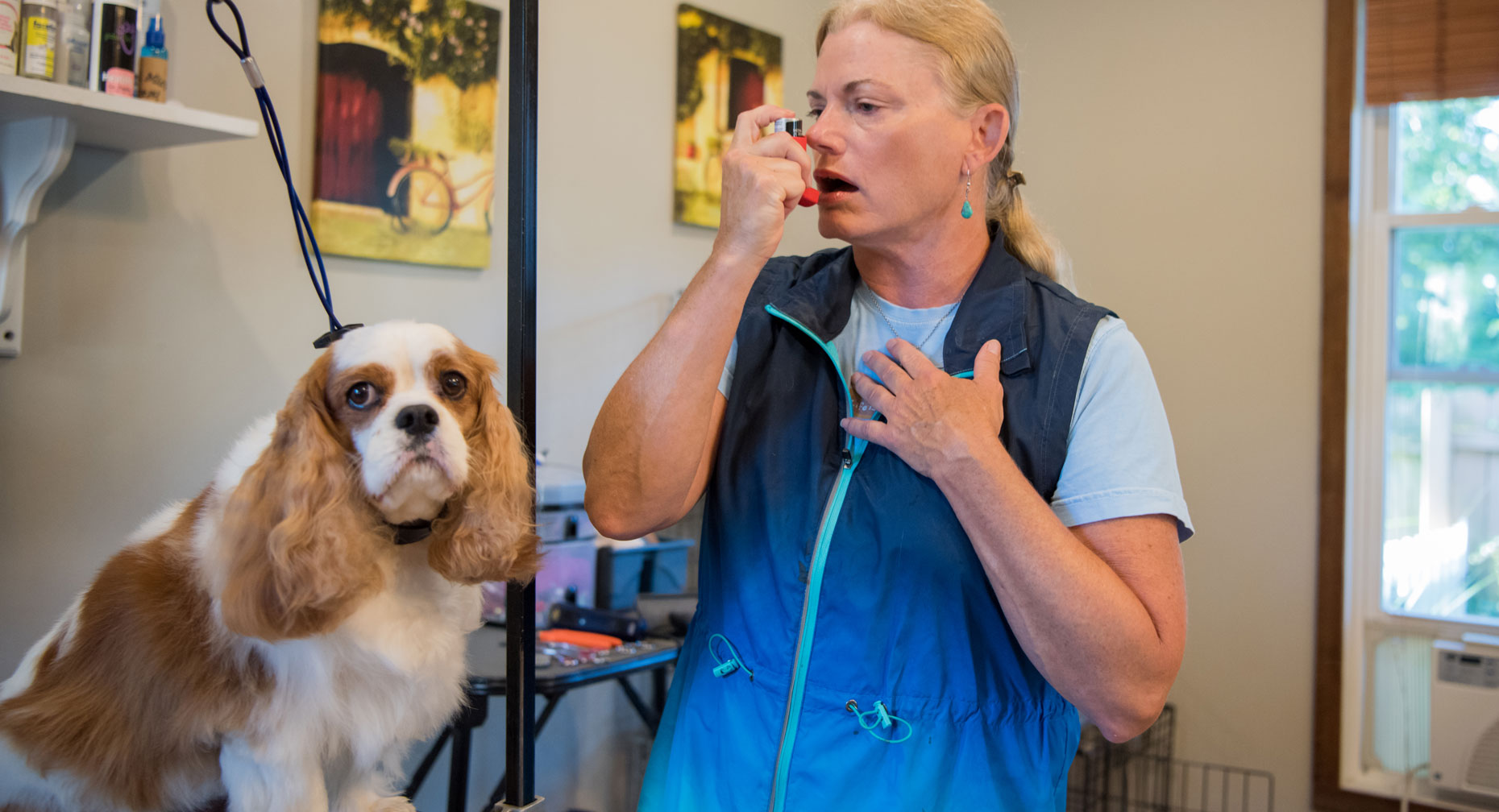Is Your Job Giving You Asthma?

Find Your Perfect Match
Answer a few questions and we'll provide you with a list of primary care providers that best fit your needs.
If your workplace is making it hard to breathe, you’re not alone. Occupational asthma — also called work-related asthma — is the most common lung disease in the U.S., according to the National Heart, Lung and Blood Institute. It might not sound like a big deal, but it can make you less productive, affect your quality of life and even permanently damage your lungs.
The good news? Occupational asthma is avoidable, and often reversible. Find out how to catch it early, and make changes to breathe easier.
What Causes Occupational Asthma?
Occupational asthma can be triggered by breathing in irritants at work. According to the National Institutes of Health, more than 250 substances can cause it, and include:
- Chemicals used in manufacturing
- Dusts from wood, grain and flour
- Gases, fumes and vapors
- Latex gloves
- Molds
- Animals
- Insects
What Are the Symptoms?
Both occupational asthma and asthma share the same symptoms. You may notice that your symptoms worsen at work and improve when you leave. Sometimes symptoms don’t appear until several hours after you are exposed to an allergen, or even months after you start a job. If you suffer from any of these, you may have occupational asthma:
- Wheezing
- Shortness of breath
- Runny nose
- Nasal congestion
- Eye irritation
- Chest tightness
- Coughing
How Is It Diagnosed?
Your health care provider or an allergist (a physician who specializes in the diagnosis and treatment of asthma and other allergic diseases) can diagnose occupational asthma by reviewing your medical history and doing a physical exam. She may also recommend lung function tests, blood and sputum (the mucus that you produce when you cough) lab tests, and a chest X-ray to rule out other lung problems. It’s important to spot occupational asthma early to avoid any permanent changes in your lungs.
What About Treatment?

Treating occupational asthma often starts by avoiding whatever is triggering your symptoms. It may mean staying away from gases like chlorine, nitrogen dioxide and sulfur dioxide, which can make asthma worse. Your health care provider may also give you medicine to control your asthma. Other treatments include physical therapy and breathing aids.
Can It Be Prevented?
The simplest way to stop occupational asthma is to stay away from the triggers. If your symptoms occur at work, follow these steps to reduce the risk:
- Talk with your employer about changing the work process to lessen irritant exposure.
- Keep exposure levels to a minimum by wearing masks or using other barrier methods.
- Get regular checkups to make sure your lungs aren’t being damaged.
- Avoid tobacco smoke. If you smoke, your chances of developing asthma are higher.
- Seek help from your doctor if you have breathing problems, so they don’t become permanent.
Find Your Perfect Match
Answer a few questions and we'll provide you with a list of primary care providers that best fit your needs.
Source: National Institutes of Health; American Lung Association; American Academy of Allergy Asthma & Immunology (AAAI)




